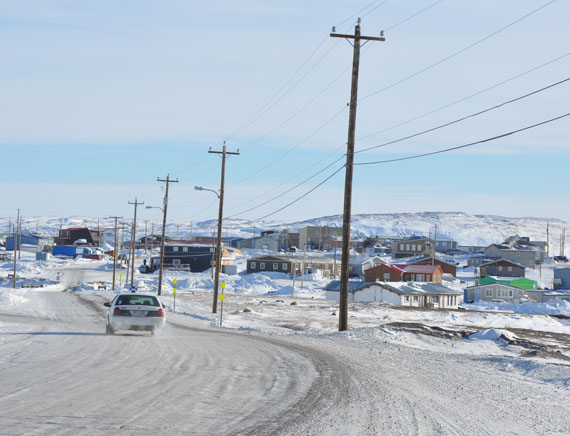Energy Efficient LED Lighting Systems
Have you ever thought about why some light bulbs burn out so quickly, when you could have sworn you only installed a new light a few months prior? There is such a thing as "planned obsolescence" that expands beyond our new iPhone, or other technology that is already outdated the moment you purchase it. See for yourself what the lightbulb industry may or may not be doing, and why traditional candescent light bulbs are more costly and need to be replaced with energy efficient bulbs and systems like LED.
QEC has installed energy efficient LED (light emitting diode) street lights in Iqaluit, Cambridge Bay, Kugluktuk and Rankin Inlet. It is the first energy conservation project of its kind in Nunavut and it provides a number of environmental, economic and social benefits. LED streetlights have long term benefits such as a reduction in energy use by as much as 30%, significant savings in operational and maintenance costs as they last five times longer than conventional street lights, and improve light quality for road safety conditions.

LED Installation Case Study
Project Proponent: Nunavut Construction Corporation (NCC)
Community: Iqaluit
Location: First Air Airplane Hangar
Project Date: 2013
Energy Problem: Provide a cost efficient and energy efficient solution with LED lighting solution and technology
Solution: Installation of ActiveLED bulbs with ActiveRest control solution for energy efficiency and cost reduction goal
Project Description: NCC engaged the services of Tim Gravert of 2LED from Ottawa, Ontario, the sole distributor of the Active LED lighting, for a large-scale application in the aerospace setting in the Arctic, which was later also installed in the First Air hangar in Rankin Inlet in 2015.
Project Results:
- 2LED replaced 62 old HID units that were measured using 576 watts per hour running 24 hours, 7 days/week for 365 days per year
- The new units run at rest, which is 12 watts most of the time.
- They are averaging 40 watts per hour over the 24 hour run time now by using the LED bulbs with the ActiveRest control solution.
- To calculate the savings we subtract the original 576 watts/hr being used before minus 40 watts/hr being used after the installation and we get 536 watts/hr being saved.
- 24 hrs x 365 days = 8,760 hrs/yr savings
- 8760 hrs/yr x 536 watts/hr = 4,695,360 watts saved per year/per light.
- Divide the watts by 1000 and we get 4,695.36kWh saved per light/per year
- Calculating the Iqaluit energy rates of 65 cents/kWh non-government commercial rates, making the saving per light at this rate as $3,051.98 per year/per light.
- First Air/Canadian North has been saving more than this since 2013.
- 7 x $189,222.76 = $1,324,559.32 on a project that cost the company an initial outlay of $85,000.
Return on Investment:
- QC $1,239,559.32 back on an $85K investment and this investment continues to pay back because of how our lighting systems are engineered to get a company out in front of the lighting industry's paradigm of planned obsolescence.
Summary
- The results indicate a substantial cost saving, Return on Investment, and energy efficiency solution in an Arctic aeronautical application.
- NCC installed the same system in Rankin Inlet in 2015, with similar results and returns.
To view the lighting system in action, see the Rankin Inlet First Air hangar and ActiveRest control solution when lights are not in use to achieve maximum cost savings.

Copyright © All Rights Reserved

